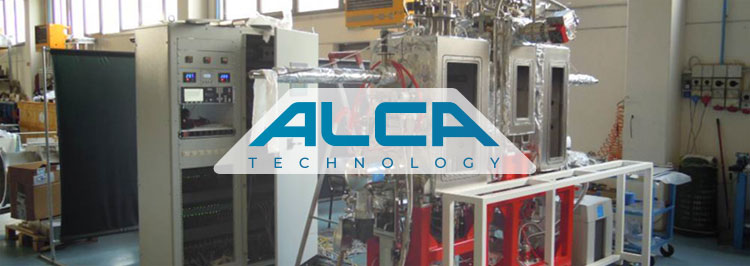The Role of Thin Film in Optical Field

Thin film coatings has found applications in mirrors, microscopy, photo catalysis, photovoltaic, solar cells, switches, lenses, microelectronics, etc. Optical thin films involves the interaction of electromagnetic radiation, at different wavelengths, with a deposited functional layer.
For a thin film to be used in optics, its thickness must be in a well-defined range, which usually spans from tens to a few hundred nm. . The composition of optical thin films can vary widely, depending on the specific application, ranging from metallic films, to oxide and also non-oxide ceramics.
A widespread application of optical thin films is in the field of light management in devices operating in the visible wavelength range, such as mirror, lens, etc. In this case, the role of the thin film is to alter the reflection, transmission, and refraction of light with respect to the behavior of the bare substrate. It is challenging to see an optical component where the law of reflection and law of refraction are obeyed as it is desires, and as such necessary adjustments have to be made on the optical system mostly through a proper choice of an optical coating. Usually, this coating, is obtained by a vacuum deposition process, where a proper sequence of substances is condensed over the surface of the substrate, by means of a wide range of PVD technologies.
As an example, lenses are often treated with anti-reflective coatings to reduce the amount of light being reflected by the interface between air, and glass. This anti-reflective coating is obtained by a coating made of a proper sequence of dielectric layers, with well defined thickness. It reduces glare and also prevents flare associated with the use of uncoated lenses in applications as glasses, binoculars, telescopes, cameras, etc.
As it is is known, materials can be classified based on their abilities to reflect, transmit, and refractlight: whatever their exact nature, all materials can potentially find interesting application as optical functional coatings.
As an example, when metallic materials are deposited at low thicknesses, they are partially transparent, and can be used as protective layers against harmful radiations in specific wavelength intervals while preserving the possibility to see through. An interesting application in this field is the use of Gold as a semi-transparent barrier, which can block thermal IR radiation, in protective glasses, buildings windows, airplane windows, etc.
In turn, when the thickness of the metallic layer is higher, i.e. some hundreds nm, the resulting thin films can act as mirrors. For example, aluminum and silver are used to manufacture household mirrors, as well as high-end mirrors used in astronomical telescopes. Silver is usually preferred when a higher reflectance in the visible portion of the spectrum is preferred, while aluminum is the better choice when the ultraviolet band is of interest. It has to be noted also that silver is less environmental resistant than aluminum, therefore, it need to be protected with an additional ceramic coating, which results in a smart combination of functional materials with different purposes.
Also ceramic materials find useful application, in the form of thin films, in many optical devices. They can be used, for example, for color filtering and correction. An example is the coating of a filament-based lamp, halogen flood light, etc. In this case, the combination of material refractive index, and thin film thickness determines the properties of what is called a dichroic filter. Such optical coatings can also be used to generate different colors through tilting by varying the angle of incidence of the light; this process has been used in decorative applications and even in forgery prevention, e.g. to detect fake currency notes (money). Also transparent electrically conductive coatings can be: an example of a transparent conductive layer is indium tin oxide (ITO). Transparent conductive coatings are used to supply energy to devices as LCD/OLED displays, to heat up a transparent surface to avoid fogging and ice formation, etc.
Another interesting application of thin films in optics is in biology: due to a phenomenon known as “surface plasmon resonance” the presence of proteins and pathogens can be detected with high sensitivity, and many substances of great interest for scientists can be studied with high accuracy.
Other applications of the thin film in optics include; anticorrosive films, superconducting films, band filters, interference filters, polarizes, hard coating, etc.
Examples of metals used in the optical field
| Metals | Application in Optics |
|---|---|
| Copper | Transparent films |
| Silver | Thin film optical guides |
| Vanadium | Optical switches |
| Gold | Plasmon production |
| Tungsten | Photo catalysis |
| Aluminum | Microelectronics |
Other examples of thin films used in Optics
- Zinc oxide (ZnO)
ZnO thin film has high electrical conductivity, which can also be improved through doping with Gallium (Ga) or Aluminium (Al). Doped ZnO thin films are used in making thin film transistors. ZnO thin film has an average of between 78-81% transmittance of visible light.
- Antimony Sulphide (Sb2S3)
Antimony sulfide films have applications in optoelectronic and in photovoltaic solar cell devices.This metal film can be produced by different methods such as physical vapor deposition (PVD); spray pyrolysis, sputtering, laser ablation, chemical vapor deposition (CVD); spin techniques, thermal evaporation, etc.Doping antimony sulfide with palladium helps to increase the application of antimony sulfide thin films.
- Lead Selenide (PbSe)
Lead selenide is used in IR detector, laser, photovoltaic absorber, semiconductors, etc. Lead selenide thin films can be produced by chemical vapor deposition (CVD).
- Cadmium sulfide (CdS)
Cadmium sulfide thin films have been used in electronics devices, photodetector, solar cells because they have a full band gap. Cadmium sulfide thin films can be prepared by pyrolysis deposition at different temperatures after which annealing is done.These films are then used in solar cell as optical windows.
Methods of producing thin films
Thin film optics entails the application of light. Thin films are manufactured by the process called thin film deposition on a surface known as substrate. The particular technology used, and the deposition parameters, determine the thickness of the film and also its quality and appropriateness for a specific purpose. The general classification of thin film deposition methods used in optical application provides two categories of methods:
- Physical vapor deposition methods.
- Chemical vapor deposition methods.
- Physical deposition method includes; sputtering, evaporation (thermal, electron beam), Ion plating, and activated reactive evaporation. The thin films produced by physical deposition methods usually have lower quality, due to the presence of a variety of defects, and less step coverage. Physical deposition method presents a small process risk especially concerning metal deposition. Examples of metallic thin films by different deposition methods include; ZnS, ZnSe, and CdS (Sputter deposition), PbS, Cu2S, CoS, Bi2S3, and Ni4S3 (electrode position), CuS, ZnS, and CdSe (spray pyrolysis).
Thin films produced by Chemical Vapor Deposition method can be of higher quality, and even thickness, with high capability of step coverage.Some methods of Chemical Vapor Deposition are: spray pyrolysis, electrodeposition, anodization, solution growth, etc.
Conclusions
Thin films are used in many different fields: optical application are an important class of application, where they excel for efficacy, scalability and increased product value. They can be used to manufacture filters, mirrors, anti-reflective coatings, etc. which are conveniently applied in many different industrial fields like automotive, biomedical, optoelectronics, etc.


